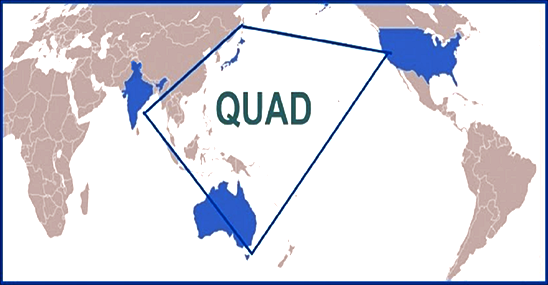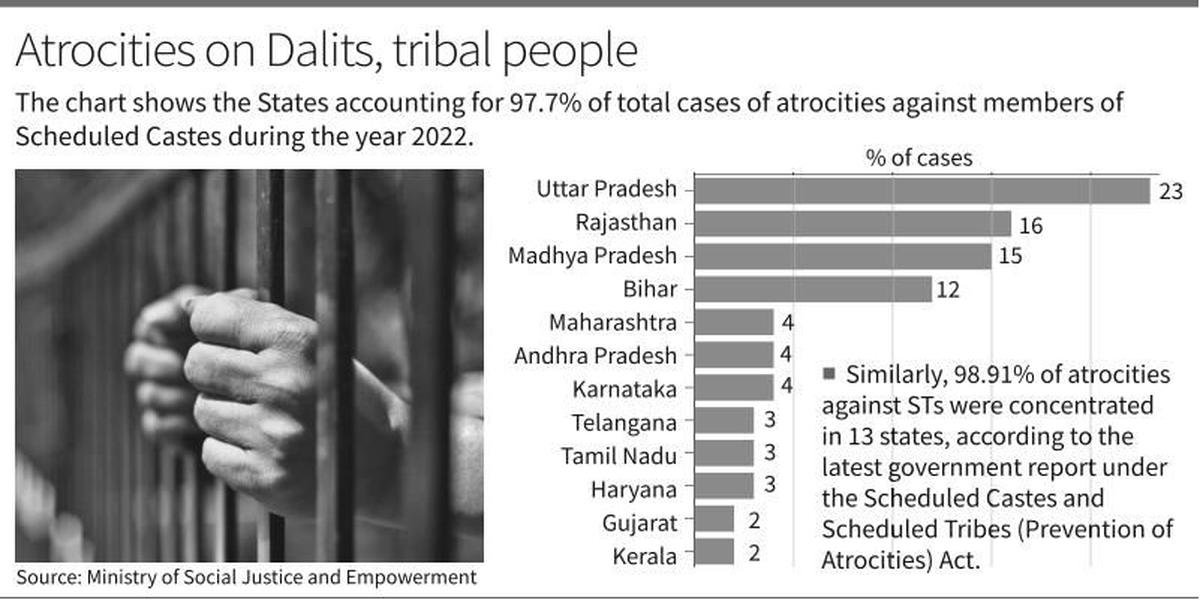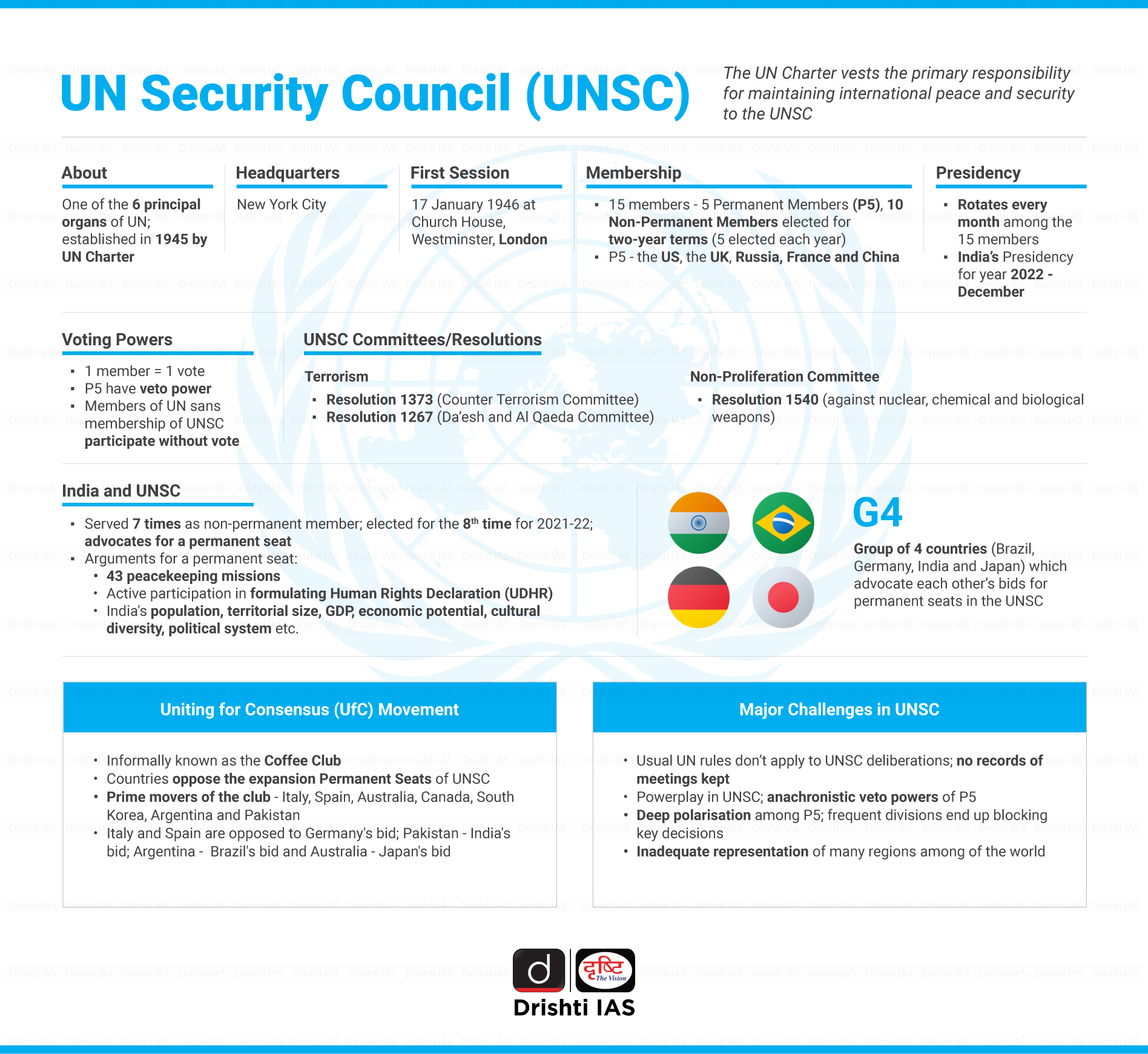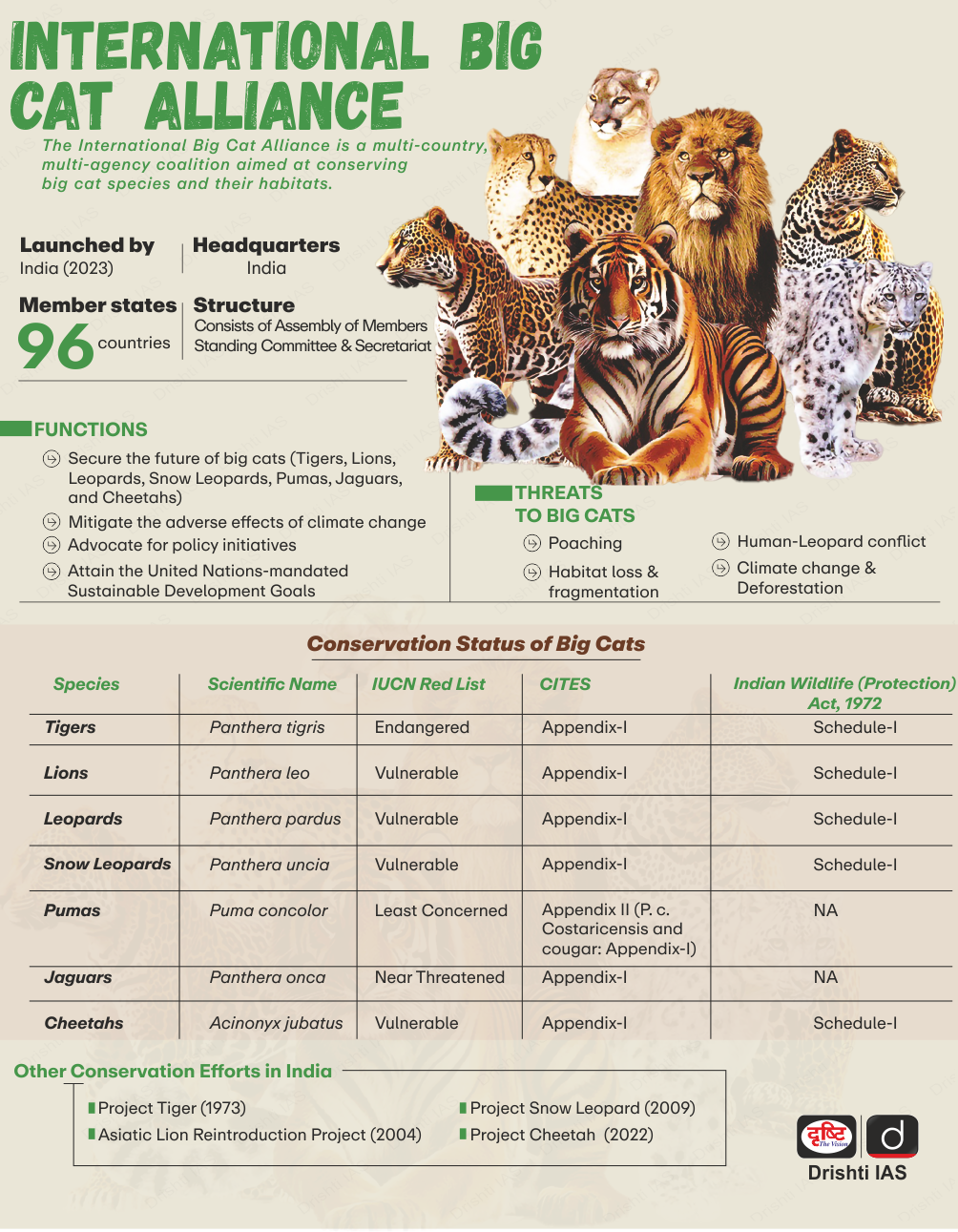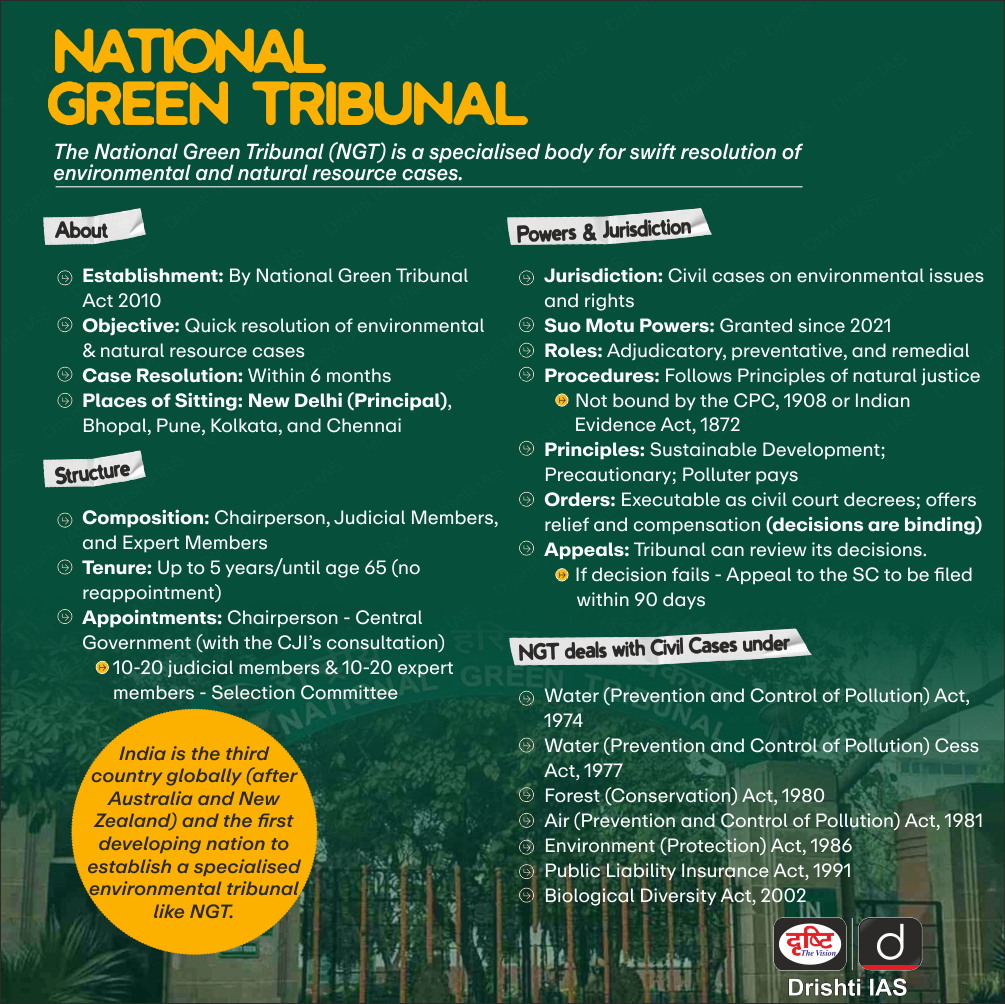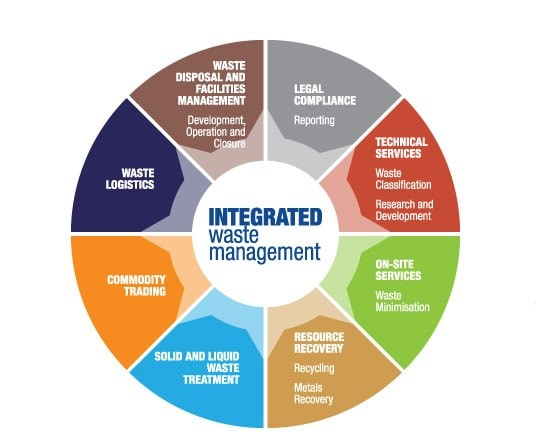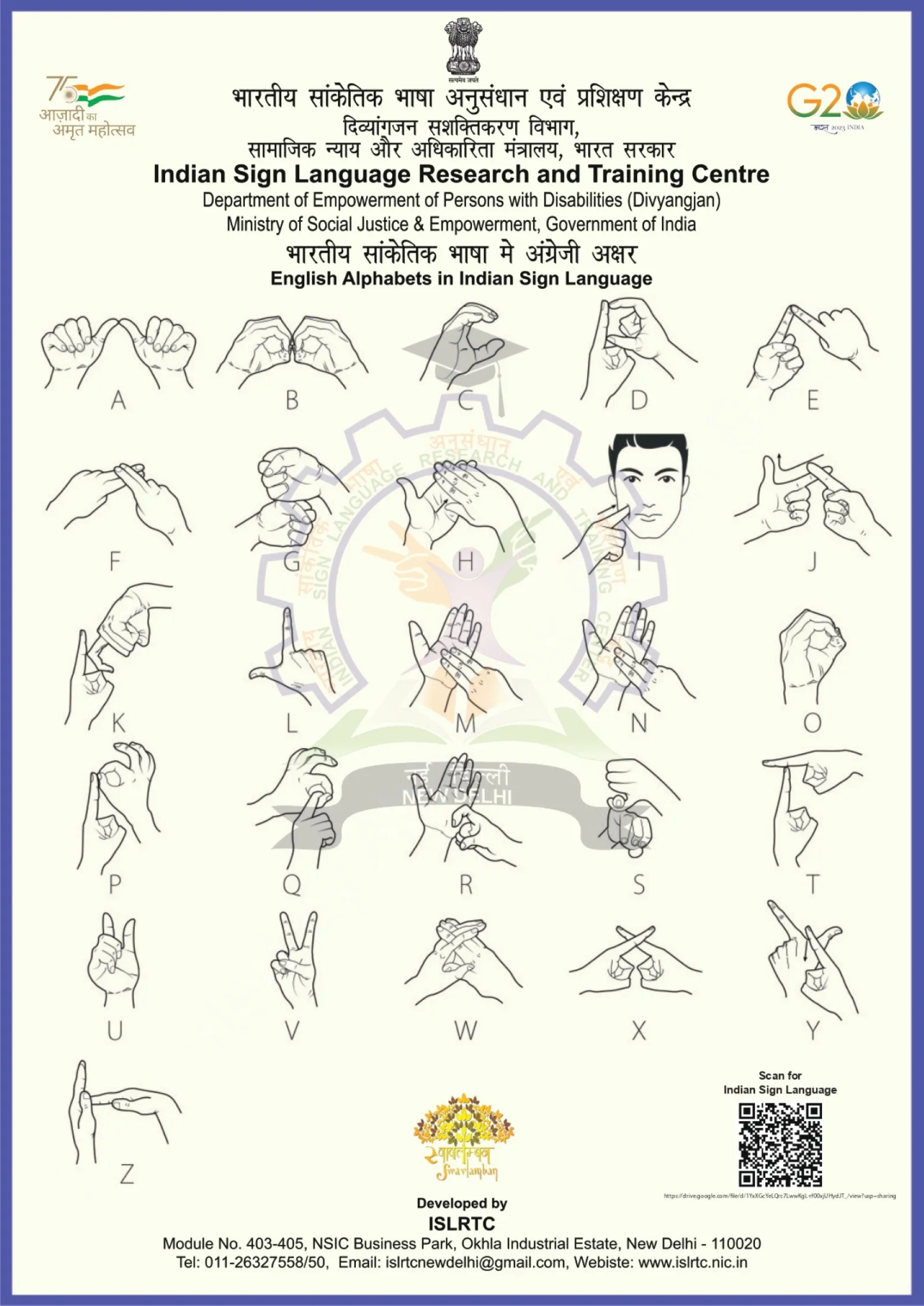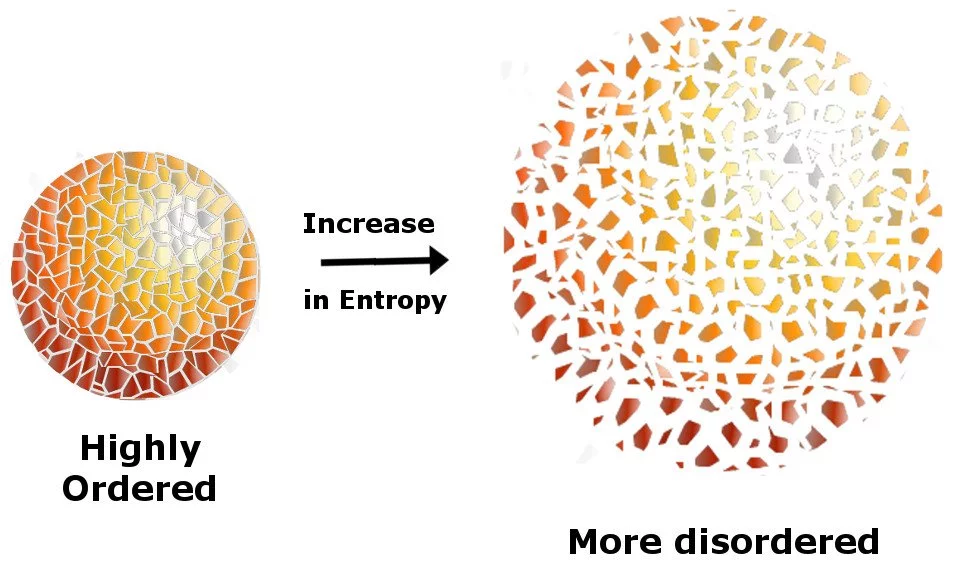International Relations
6th Quad Summit 2024
For Prelims: Quad, Pandemic, Indo-Pacific Nations, Maritime Initiative for Training in the Indo-Pacific (MAITRI), Indo-Pacific Partnership for Maritime Domain Awareness (IPMDA), Digital Public Infrastructure, Port, Tsunami, Quad-plus.
For Mains: Multi-dimensional initiatives of Quad countries for stability and prosperity of Indo-Pacific nations.
Why in News?
Recently, the 6th Quad Summit was held at Delaware in the United States. It was the 4th in-person Quad Leaders' Summit.
- The Quad is leading ambitious projects to help partners address pandemics and disease, confront the threat of climate change, bolster cybersecurity among others.
What are the Key Highlights of the 6th Quad Summit?
- Health:
- Quad Health Security Partnership (QHSP): QHSP was launched by Quad in 2023 to enhance health security coordination in the Indo-Pacific region.
- New initiatives like the Quad Cancer Moonshot, has been announced for treatment of cervical cancer.
- Pandemic Preparedness: The United States has pledged over USD 84.5 million to enhance infectious disease prevention and response capabilities across fourteen Indo-Pacific nations.
- Quad Health Security Partnership (QHSP): QHSP was launched by Quad in 2023 to enhance health security coordination in the Indo-Pacific region.
- Maritime Security:
- MAITRI: The Quad has introduced the Maritime Initiative for Training in the Indo-Pacific (MAITRI) to enhance regional maritime security capabilities.
- The Indo-Pacific Partnership for Maritime Domain Awareness (IPMDA) was launched in 2022 to improve maritime security and monitor illegal activities.
- Indo-Pacific Logistics Network: The Quad has initiated a logistics network to improve airlift capacity for rapid disaster response across the Indo-Pacific, aiming for efficiency in civilian responses.
- Coast Guard Cooperation: A first-ever Quad-at-Sea Ship Observer Mission is planned for 2025, to enhance interoperability.
- MAITRI: The Quad has introduced the Maritime Initiative for Training in the Indo-Pacific (MAITRI) to enhance regional maritime security capabilities.
- Quality Infrastructure Development:
- Digital Infrastructure Principles: The Quad has established principles for the development of digital public infrastructure, focusing on security and inclusivity.
- Quad Ports of the Future Partnership: It aims to support resilient port infrastructure development and enhance regional connectivity across the Indo-Pacific region.
- In 2025, Quad partners intend to hold the inaugural Regional Ports and Transportation Conference in Mumbai.
- Undersea Cables and Digital Connectivity: Quad partners have committed over USD 140 million to undersea cable projects, aiming for primary telecommunication connectivity for all Pacific island countries by 2025.
- For this, Australia launched the Cable Connectivity and Resilience Centre in July 2024.
- Quad Infrastructure Fellowship: It aims to improve capacity and deepen professional networks across the region to design, manage, and attract investment in infrastructure projects.
- Critical and Emerging Technology:
- Open Radio Access Network (RAN) and 5G: In 2023, the Quad initiated its first Open RAN deployment in Palau, aiming to build a secure telecommunications ecosystem, with an investment of approximately USD 20 million.
- The Quad intends to support ongoing Open RAN trials and the Asia Open RAN Academy in the Philippines.
- AI-ENGAGE Initiative (2023): Through the Advancing Innovations for Empowering NextGen Agriculture (AI-ENGAGE), Quad governments are deepening leading-edge collaborative research to harness artificial intelligence and robotics to empower next-generation agriculture.
- BioExplore Initiative: It aims to utilise AI in studying biological ecosystems to innovate in disease diagnosis, crop resilience, and clean energy solutions.
- Semiconductors: The Quad leaders finalised Memorandum of Cooperation to facilitate collaboration in addressing semiconductor supply chain risks.
- Quantum Technology: The Quad Investors Network (QUIN), a nonprofit initiative, highlighted ways in which Quad country’s Quantum ecosystems can work together to collectively leverage capital and expertise.
- Open Radio Access Network (RAN) and 5G: In 2023, the Quad initiated its first Open RAN deployment in Palau, aiming to build a secure telecommunications ecosystem, with an investment of approximately USD 20 million.
- Climate and Clean Energy:
- Enhanced Early Warning Systems: The US will provide 3D-printed weather stations to help Pacific Island countries while Australia and Japan are enhancing regional disaster risk reduction efforts.
- Japan is also enhancing cooperation with Pacific Island countries under its Pacific Climate Resilience Initiative.
- Quad Clean Energy Supply Chain Diversification Program (2023): It aims to support the development of secure and diversified clean energy supply chains in the Indo-Pacific region.
- India committed to invest USD 2 million in new solar projects in Fiji, Comoros, Madagascar, and Seychelles.
- Enhanced Early Warning Systems: The US will provide 3D-printed weather stations to help Pacific Island countries while Australia and Japan are enhancing regional disaster risk reduction efforts.
- Cybersecurity: The Quad has developed the Quad Action Plan to protect commercial undersea telecommunications cables, to advance the Quad’s shared vision for future digital connectivity, global commerce, and prosperity.
- The Quad is working together to foster a resilient information environment through its Countering Disinformation Working Group, by supporting media freedom and addressing foreign information manipulation and interference.
- Space: Quad partners intend to share expertise and experience in space situational awareness (SSA), contributing to long-term sustainability of the space environment.
- Countering Terrorism: Quad leaders discussed counter terrorism threats, Quad counter terrorism good practices, and ways the Quad can work together to mitigate acts of terrorism through information sharing and strategic messaging.
- The Quad Counter Terrorism Working Group (CTWG) currently focuses on countering the use of unmanned aerial systems (C-UAS), chemical, biological, radiological and nuclear devices (CBRN), and the internet for terrorist purposes.
- People-to-People Initiatives: India announces a new initiative to award fifty Quad scholarships, worth USD 500,000, to students from the Indo-Pacific to pursue a 4-year undergraduate engineering program at a Government of India-funded technical institution.
What are Quad Principles for Development and Deployment of Digital Public Infrastructure?
- About the Principles: It was announced by the Quad countries that outline a framework for building and using digital infrastructure that is inclusive, transparent, and respects democratic values.
- About Digital public infrastructure (DPI): It is described as a set of shared digital systems that are secure, reliable and interoperable.
- They are built and leveraged by the public and private sector to provide equitable access and improve public service delivery at a large scale.
- Quad Principles for DPI: Quad affirmed the following principles for the development and deployment of DPI among others.
- Inclusivity: Eliminate barriers to empower end-users and ensure last-mile access, avoiding algorithmic bias.
- Interoperability: Use open standards for interoperability while considering legal and technical constraints.
- Scalability: Design systems flexibly to manage unexpected demand increases or expansions.
- Security and Privacy: Integrate privacy-enhancing technologies and security features to protect individual data and resilience.
- Governance for Public Benefit: Ensure systems are safe, trusted, transparent, and promote competition, inclusion, and data protection.
- Sustainability: Ensure continuous operations through adequate financing and technological support.
- Intellectual Property Protection: Protect intellectual property rights based on existing legal frameworks.
- Sustainable Development: Align systems with the 2030 Agenda for Sustainable Development and the Sustainable Development Goals (SDGs).
What is Quad?
- About: Quad, or Quadrilateral Security Dialogue, is a diplomatic partnership among Australia, India, Japan, and the US.
- It focuses on stability and prosperity in the Indo-Pacific region, promoting an open, stable, and resilient environment.
- Objectives of Quad: The Quad aims to address pressing regional challenges, including health security, climate change, infrastructure, technology, cybersecurity, humanitarian assistance, maritime security, countering disinformation, and counter-terrorism.
- Origins of Quad: The Quad originated in response to the 2004 Indian Ocean tsunami, where the four nations provided humanitarian assistance.
- Formally established in 2007 by the Japanese Prime Minister Shinzo Abe, the group went dormant due to concerns over China's reactions, particularly after Australia withdrew in 2008.
- It was revived in 2017 amid shifting regional attitudes toward China's influence, culminating in its first formal summit in 2021.
- Expansion Potential: “Quad-plus” meetings have included nations like South Korea, New Zealand, and Vietnam, indicating potential for future expansion.
Conclusion
The Quad is dedicated to enhancing health security against pandemics, confronting the climate change threat, and bolstering cybersecurity. By fostering collaboration and innovation across these critical areas, the Quad aims to ensure a resilient and prosperous Indo-Pacific, contributing to global stability and sustainable development.
|
Drishti Mains Question: Q. Discuss the significance of the Quad (Quadrilateral Security Dialogue) in addressing contemporary challenges in the Indo-Pacific region. |
UPSC Civil Services Examination, Previous Year Question (PYQ)
Mains
Q. The new tri-nation partnership AUKUS is aimed at countering China’s ambitions in the Indo-Pacific region. Is it going to supersede the existing partnerships in the region? Discuss the strength and impact of AUKUS in the present scenario. (2021)
Q. Quadrilateral Security Dialogue (Quad) is transforming itself into a trade bloc from a military alliance, in present times Discuss. (2020)


Social Justice
Strengthening POCSO Act 2012
For Prelims: Supreme Court, Protection of Children from Sexual Offences (POCSO) Act, 2012, National Commission for Protection of Child Rights (NCPCR), UN Convention on the Rights of the Child, Fast Track Special Court’s Scheme, National Crime Records Bureau (NCRB).
For Mains: Steps taken to address child sexual abuse in India and associated challenges.
Why in News?
Recently, the Supreme Court ruled that watching or possessing sexually explicit material involving minors is illegal under the Protection of Children from Sexual Offences (POCSO) Act, 2012.
- It constitutes a punishable offence under the POCSO Act, 2012 regardless of whether the material is further shared or transmitted.
- It overturned a prior ruling by the Madras High Court, which had determined that private viewing of child pornography did not amount to an offence without further distribution.
What are Key Highlights of the Supreme Court Ruling?
- Redefinition of Terminology: The Supreme Court (SC) has urged the Union government to replace the term "child pornography" with "child sexual exploitative and abuse material" (CSEAM).
- This change is significant because the term "pornography" often implies consensual adult conduct, failing to accurately represent abuse and exploitation.
- Expansion of Section 15 of the POCSO Act, 2012: The SC provided a stricter interpretation of the term “storage of child pornography” under Section 15 of the POCSO Act, 2012. Previously, this provision primarily addressed storage for commercial purposes. The court's interpretation of Section 15 introduces three key offences.
- Possession Without Reporting: A person who stores or possesses child pornography must delete, destroy, or report it to the designated authority. Failure to do so can be punishable under Section 15(1).
- Intent to Transmit or Distribute: Individuals who possess child pornography intending to transmit or display it in any manner, except for the purpose of reporting, can face charges under Section 15(2).
- Commercial Possession: Storing child pornography for commercial purposes falls under Section 15(3), which outlines the most severe penalties.
- Concept of Inchoate Offences: The ruling classifies the offences under Section 15 as "inchoate" offences, meaning they are preparatory actions taken toward committing further crimes.
- Redefinition of Possession: The court expanded the definition of "possession" in child pornography cases. It now includes "constructive possession," which refers to situations where an individual may not physically hold the material but has the ability to control it and knowledge of that control.
- E.g., Watching child pornography online without downloading it can still be considered in possession.
- If an individual receives a link to child pornography but closes it without reporting, they may be held accountable if they do not inform authorities, even if they do not retain physical possession after closing the link.
- Educational Reforms: The court urged the government to promote comprehensive sex education in schools and society, countering misconceptions that often stigmatised discussions about sexual health.
- This education should include topics such as consent, healthy relationships, gender equality, and respect for diversity.
- Awareness About Pocso Act, 2012: Sections 43 and 44 of the POCSO Act, 2012 require central and state governments, along with the National Commission for Protection of Child Rights (NCPCR), to promote widespread awareness of the Act.
- Formation of an Expert Committee: An expert committee should be tasked with devising comprehensive programs for health and sex education and increasing awareness of the POCSO Act, 2012 among children.
- Victim Support and Awareness: The judgement underscored the need for robust support systems for victims of CSEAM, including psychological counselling, therapeutic interventions, and educational support.
- Programmes like cognitive behavioural therapy (CBT) may help address the cognitive distortions that fuel such behaviour among offenders.
What is the Status of Crimes Against Children?
- Booming Market: According to the US-based National Centre for Missing and Exploited Children (NCMEC), India now accounts for the maximum number of online child sexual abuse imagery in the world, followed by Thailand.
- NCMEC estimates that Indian users have uploaded 25,000 images or videos between April and August 2024.
- Geographical Distribution: Delhi tops the list for the maximum uploads of child porn, followed by Maharashtra, Gujarat, Uttar Pradesh and West Bengal.
- Increased Circulation: According to the National Crime Records Bureau (NCRB) report 2023, 781 cases of creating or storing child porn were recorded in 2018. In 2017, there were 331 cases.
- The dissemination of inappropriate content featuring children accounted for 1,171 cases in 2022.
What is the POCSO Act?
- About: The law aims to address offences of sexual exploitation and sexual abuse of children. The Act defines a child as any person below the age of 18 years.
- It was enacted in consequence to India’s ratification of the UN Convention on the Rights of the Child in 1992.
- Features:
- Gender-Neutral Nature: The Act recognises that both girls and boys can be victims of sexual abuse and that such abuse is a crime regardless of the gender of the victim.
- Confidentiality of Victim’s Identity: Section 23 of the POCSO Act, 2012 mandates that the identity of child victims must be kept confidential. Media reports cannot disclose any details that could reveal the victim’s identity, including their name, address, and family information.
- Mandatory Reporting of Child Abuse Cases: Sections 19 to 22 compel individuals who have knowledge or reasonable suspicion of such offenses to report them to concerned authorities..
- Gaps in Implementation of the POCSO Act, 2012:
- Lack of Support Persons: A critical gap identified in the implementation of the POCSO Act, 2012 is the absence of “support persons” for victims. The Supreme Court found that in 96% of POCSO cases, victims were not provided with the necessary support throughout the legal process.
- A support person may be a person or organisation working in the field of child rights or child protection.
- Insufficient Designation of POCSO Courts: Not all districts have designated POCSO courts. As of 2022, only 408 POCSO courts were established across 28 states as part of the Fast Track Special Court’s Scheme.
- Shortage of Special Public Prosecutors: There is a lack of Special Public Prosecutors specifically trained to handle POCSO cases.
- Lack of Support Persons: A critical gap identified in the implementation of the POCSO Act, 2012 is the absence of “support persons” for victims. The Supreme Court found that in 96% of POCSO cases, victims were not provided with the necessary support throughout the legal process.
Conclusion
A coordinated effort among stakeholders, including educators, healthcare providers, and law enforcement, is vital for early intervention in child sexual exploitation. Societal responsibility and a shift in attitudes are essential to prevent victimisation and support recovery, ensuring that victims can heal and regain their dignity and hope.
|
Drishti Mains Question: Q.Critically analyse the effectiveness of the Protection of Children from Sexual Offences (POCSO) Act, 2012 in addressing child sexual abuse in India. |
UPSC Civil Services Examination Previous Year Question (PYQ)
Prelims
Q. Which of the following are envisaged by the Right against Exploitation in the Constitution of India?(2017)
- Prohibition of traffic in human beings and forced labour
- Abolition of untouchability
- Protection of the interests of minorities
- Prohibition of employment of children in factories and mines
Select the correct answer using the code given below:
(a) 1, 2 and 4 only
(b) 2, 3 and 4 only
(c) 1 and 4 only
(d) 1, 2, 3 and 4
Ans: (c)
Mains
Q. Examine the main provisions of the National Child Policy and throw light on the status of its implementation. (2016)


Indian Society
Report on Atrocities Against SCs and STs
For Prelims: Supreme Court, Scheduled Castes, Scheduled Tribes, Anticipatory bail, Special courts
For Mains: Scheduled Castes and Scheduled Tribes (Prevention of Atrocities) Act, 1989, Issues Arising Out of Design & Implementation of Policies
Why in News?
Recently, the union government has released a report under the Scheduled Castes and Scheduled Tribes (Prevention of Atrocities) Act, 1989 highlighting the status of atrocities against Scheduled Castes in 2022.
What are the Key Findings of the Report on Atrocities Against SCs and STs?
- Case Statistics: In 2022, there were 51,656 cases of atrocities against Scheduled Castes(SCs) and 9,735 against Scheduled Tribes (STs). Notably, 97.7% of SC cases and 98.91% of ST cases were concentrated in just 13 states.
- States with Highest Incidents:
- For SCs: Following 6 States accounted for nearly 81% of the total cases.
- Uttar Pradesh: 12,287 cases (23.78%)
- Rajasthan: 8,651 cases (16.75%)
- Madhya Pradesh: 7,732 cases (14.97%)
- Other States: Bihar with 6,799 (13.16%), Odisha with 3,576 (6.93%), and Maharashtra with 2,706 (5.24%).
- For STs:
- Madhya Pradesh: 2,979 cases (30.61%)
- Rajasthan: 2,498 cases (25.66%)
- Odisha: 773 cases (7.94%).
- Other States: Maharashtra with 691 (7.10%) and Andhra Pradesh with 499 (5.13%).
- For SCs: Following 6 States accounted for nearly 81% of the total cases.
- Charge Sheets and Investigations:
- SC-related Cases: Charge sheets were filed in 60.38% of the SC-related cases, while 14.78% were concluded with final reports due to reasons such as false claims or lack of evidence.
- ST-related Cases: Charge sheets were filed in 63.32% of ST-related cases while 14.71% were concluded with final reports.
- By the end of 2022, 17,166 cases involving SCs and 2,702 cases involving STs were still under investigation.
- Conviction Rates:
- The conviction rate under the Act has declined from 39.2% in 2020 to 32.4% in 2022, indicating a troubling trend in judicial outcomes.
- Infrastructure Deficiencies:
- Only 194 out of 498 districts in 14 states have established special courts to expedite trials for atrocities against SCs and STs.
- Specific districts prone to atrocities have not been adequately identified, with Uttar Pradesh reporting no identified atrocity-prone areas despite having the highest number of cases.
- Protection Cells:
- SC/ST protection cells have been established in various states and union territories, including Andhra Pradesh, Assam, Bihar, Gujarat, Tamil Nadu, and others, as well as union territories like Delhi, Jammu and Kashmir, and Puducherry.
What are the Reasons for Crime Against SC and ST Communities?
- Caste Prejudice and Untouchability: Deep-rooted caste hierarchies perpetuate discriminatory practices, where SC/ST communities are often deemed "lower" and subjected to social exclusion and violence due to their birth-based caste identity.
- Land Disputes and Alienation: Historically deprived of land ownership, SC/ST communities face constant conflict over land access, leading to disputes with dominant castes.
- Economic Marginalisation: Limited access to education, employment, and economic resources heightens the vulnerability of SC/ST groups, leaving them more susceptible to exploitation and violence by dominant communities.
- Social and Political Power Imbalance: Dominant upper castes often wield disproportionate political and social influence, enabling them to uphold discriminatory practices without fear of legal consequences.
- Inadequate Implementation of Laws: Although laws like the SC/ST (Prevention of Atrocities) Act exist to protect these communities, weak enforcement, coupled with police and bureaucratic bias, often hinders justice for victims of caste-based violence.
- Political Opportunism: Caste tensions are sometimes exacerbated by political actors who exploit them for electoral gains, leading to further polarisation and conflict between communities.
What is the Scheduled Castes and Scheduled Tribes (Prevention of Atrocities) Act, 1989?
- About:
- It was enacted to protect SCs and STs from caste-based violence and discrimination.
- Objective:
- The Act aims to protect Article 15 and Article 17 of the Constitution, seeks to safeguard disadvantaged communities, and addresses the shortcomings of previous legislation, such as the Protection of Civil Rights Act, 1955.
- Rules and Implementation:
- The Act empowers the Central Government to establish rules for its enforcement, while State Governments and Union Territories are responsible for its administration with central support.
- Key Provisions:
- Offences: It defines various offences against SC/ST members, including physical violence, harassment, and social discrimination, categorising them as atrocities and prescribing stricter punishments than those in the Indian Penal Code, 1860 (BNS, 2023).
- Anticipatory Bail Provisions: Section 18 of the Act excludes the application of Section 438 of the Code of Criminal Procedure 1973 (Bharatiya Nagrik Suraksha Sanhita, 2023), which provides for anticipatory bail.
- Special Courts: The Act mandates the establishment of Special Courts for speedy trial and SC/ST Protection Cells at the state level, led by senior police officers, to oversee the implementation of the Act.
- Investigations: Investigations into offences under the Act must be conducted by officers not below the rank of Deputy Superintendent of Police (DSP) and must be completed within a stipulated time frame.
- Relief and Compensation: The Act provides for relief and rehabilitation of victims, including financial compensation, legal aid, and support services.
- Exclusions:
- The Act does not apply to offences between SCs and STs, nor can they invoke the Act against one another.
- Recent Amendments:
- Scheduled Castes and Scheduled Tribes (Prevention of Atrocities) Amendment Act, 2015:
- This amendment expanded the definition of offences, including acts like forcing manual scavenging, social ostracism, sexual exploitation, and dedicating SC/ST women as devadasis.
- Public servants who fail to perform duties concerning SCs and STs can also face imprisonment.
- Scheduled Castes and Scheduled Tribes (Prevention of Atrocities) Amendment Act, 2018: This removed the requirement for approval from a Senior Superintendent of Police before arresting an accused, allowing immediate arrests without prior clearance.
- Scheduled Castes and Scheduled Tribes (Prevention of Atrocities) Amendment Act, 2015:
Judgments Related to SC and ST (Prevention of Atrocities) Act, 1989
- Kanubhai M. Parmar v. State of Gujarat Case, 2000: The Gujarat High Court ruled that the Act does not apply to crimes between members of SCs or STs, as its intent is to protect these communities from atrocities committed by outsiders.
- Raj Mal v. Ratan Singh Case, 1988: The Punjab & Haryana High Court clarified that Special Courts under the SC and ST Act are exclusively designated for trying offenses under the Act, distinguishing them from regular magistrate or session courts.
- Arumugam Servai v. State of Tamil Nadu Case, 2011: The Supreme Court ruled that insulting a member of an SC/ST community constitutes an offense under the Act.
- Subhash Kashinath Mahajan v. State of Maharashtra Case, 2018: The Supreme Court clarified that the bar on anticipatory bail under Section 18 of the Act is not absolute, allowing courts to grant bail in cases where the allegations appear baseless.
- Shajan Skaria v. The State of Kerala Case, 2024: In this the Supreme Court ruled that not every insult or intimidating remark directed at an individual belonging to a SC or ST constitutes an offence under the Scheduled Castes and Scheduled Tribes (Prevention of Atrocities) Act of 1989.
Way Forward
- Strengthening Legal Framework: There is a need to enhance the infrastructure for special courts to ensure timely trials and convictions.
- Also there is a need to increase the number of trained personnel in law enforcement to handle SC/ST cases sensitively and effectively.
- Improving Reporting Mechanisms: Establish better reporting and monitoring systems to track atrocities against SCs and STs, ensuring that victims can report incidents without fear of retribution.
- Awareness and Education: Implement awareness campaigns to educate communities about SC/ST rights and the legal protections available under the Act.
- Targeted Interventions: Identify and declare atrocity-prone districts, implementing targeted interventions to address the root causes of caste-based violence in these areas.
- Monitoring and Evaluation: Establish a robust monitoring framework to evaluate the effectiveness of the measures implemented, ensuring accountability and continuous improvement in addressing atrocities against SCs and STs.
- Collaboration with NGOs: Partner with non-governmental organizations and civil society groups to support victims and advocate for their rights, ensuring their voices are heard in policy-making processes.
|
Drishti Mains Question: Analyse the key factors behind the continued atrocities against SC/ST communities in India. How effective is the SC/ST (Prevention of Atrocities) Act, 1989 in addressing these challenges? |
UPSC Civil Services Examination Previous Year Question (PYQ)
Mains
Q. What are the two major legal initiatives by the State since Independence addressing discrimination against Scheduled Tribes (STs)? (2017)

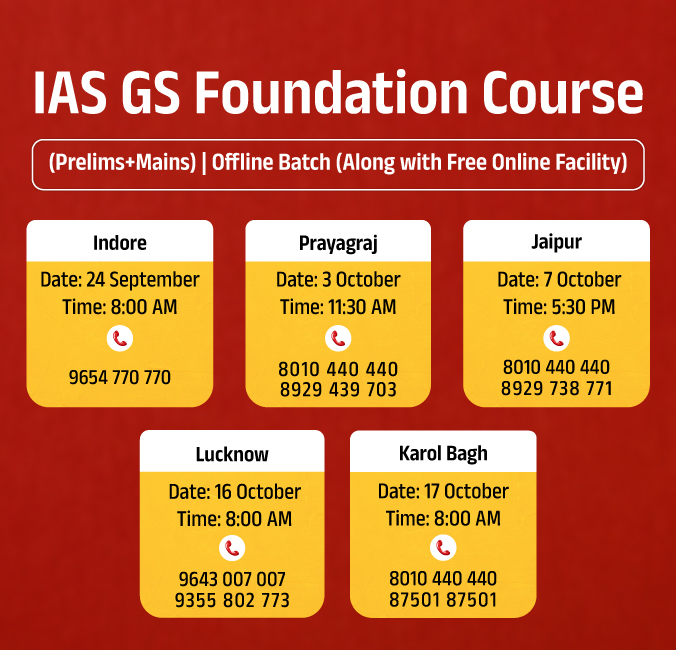
International Relations
UN Summit of the Future and the Reform in UN Institutions
For Prelims: United Nations Secretary-General, Stockholm+50 conference, High Seas Treaty, Sustainable Development Goals, Paris Agreement, Fossil fuels, Artificial Intelligence, World War II , International Monetary Fund,
For Mains: Need for UN Reform, UN Reforms and India, UN role in maintaining international peace and security
Why in News?
The United Nations (UN) Secretary-General, Antonio Guterres, recently addressed the UN Summit of the Future 2024, and called for urgent reforms to outdated UN institutions related to global peace, security, and finance. The Prime Minister of India also participated in the summit.
What are the Key Highlights of the UN Summit of the Future?
- About: The UN Summit of the Future is aimed at reforming and strengthening international governance. The summit seeks to address contemporary global challenges and secure a sustainable future for upcoming generations.
- This summit builds on recent UN efforts such as the 2022 UN Environment Stockholm+50 conference and the High Seas Treaty.
- The theme of the Summit is ‘Multilateral Solutions for a Better Tomorrow’.
- The Summit concluded with the adoption of an outcome document - A Pact for the Future, along with two annexes, Global Digital Compact and A Declaration on Future Generations.
- Pact for the Future: It is aimed at accelerating Sustainable Development Goals (SDGs) and the Paris Agreement for climate action. Includes commitments to a just transition from fossil fuels and ensuring a sustainable and peaceful future.
- The Global Digital Compact promotes equitable access to technology, ensuring it benefits everyone.
- Introduced the first universal agreement on Artificial Intelligence (AI) governance, advocating for establishment of a multidisciplinary Independent International Scientific Panel on AI within the UN, ensuring balanced geographic representation to enhance scientific understanding through evidence-based assessments of impact, risks, and opportunities, leveraging existing initiatives and research networks (SDG 17).
- The “Declaration on Future Generations” focuses on long-term thinking by urging current decision-makers to consider the interests of future generations.
- It commits to nuclear disarmament, regulating autonomous weapons, and preventing an arms race in outer space, representing the first multilateral support for nuclear disarmament in over a decade.
- India's Stance at the Summit: India calls for reforms in the UN and Security Council to ensure relevance, advocating for expanded permanent membership, including itself and African nations.
- The Prime Minister of India highlighted cyber, maritime, and space as new conflict arenas, urging global frameworks to ensure security. Advocated for global digital governance while offering India’s digital public infrastructure for global cooperation.
- India backed the UN’s Pact for the Future and initiatives on AI governance, and digital cooperation.
Why is UN Reform Needed Now?
- Outdated Structure: The UN was established in 1945 when there were only 51 member states, compared to the current 193.
- The global economy is now over twelve times larger than it was in 1945, and the international financial system was designed during colonial times.
- Global Disparities: Developing nations face mounting debts and inequalities that hinder sustainable development, making it clear that current global systems do not serve the needs of today’s world.
- Technological and Geopolitical Shifts: Modern technological advancements and shifting global power dynamics highlight the inadequacies of post-World War II institutions in addressing current global challenges, such as climate action, sustainable development, and economic inequalities.
- Legitimacy and Credibility Issues: The legitimacy and credibility of the Security Council are increasingly questioned. To effectively maintain international peace and security, the Council must reflect the general will of all member states, rather than being dominated by a select few permanent members.
- Reform is essential to enhance the legitimacy of the Council’s decisions and actions, as its current permanent membership does not adequately represent today’s geopolitical realities.
- Inequitable Representation: Regions such as Asia, Africa, and Latin America are underrepresented in the current Security Council structure.
- This imbalance raises concerns about the equity of representation and undermines the effectiveness of the Council’s decision-making processes.
- An equitable distribution of non-permanent seats is essential to address these disparities.
- Financial and Administrative Reform: The financial sustainability of the UN is paramount, especially as it faces increasing demands for peacekeeping and development initiatives.
- Japan's proposal to reform emphasises aligning financial obligations with member states' responsibilities, ensuring fair and proportional contributions.
- Global Security Challenges: The current international security environment faces complex challenges, including regional conflicts, terrorism, and humanitarian crises.
- An effective Security Council is essential to address these issues effectively. Reform would enhance the UN's ability to implement preventive diplomacy and peace-building strategies.
What Reforms did the UN Secretary General Propose?
- Security Council Reform: The UN Security Council no longer reflects current geopolitical realities and risks losing credibility without reform.
- Guterres called for changes in the council’s composition and working methods to address the under-representation of regions like Africa, Asia-Pacific, and Latin America.
- Strengthening Global Financial Architecture: The international financial system including the International Monetary Fund, the World Bank Group and World Trade Organization, must better support debt-stricken developing nations struggling to achieve SDGs.
- The UN Summit of the Future introduced reforms to make financial institutions more representative and capable of addressing global economic challenges.
How will UN Reforms Impact Global Governance?
- Enhanced Inclusivity: The reforms aim to make global governance more inclusive by giving a stronger voice to developing countries and underrepresented regions like Africa, Latin America.
- This could lead to more equitable decision-making processes.
- Increased Agility: The reforms will establish a more agile Peacebuilding Commission and revise peace operations, enabling a quicker response to emerging global challenges.
- Strengthened Financial Architecture: Reforms in the international financial system will better assist developing countries facing significant debt, facilitating their progress towards SDGs.
- Digital Governance: The Global Digital Compact, part of the Pact for the Future, aims to regulate artificial intelligence and digital technologies to ensure they contribute to sustainable development and human rights.
- This includes addressing issues like the digital divide and cybersecurity.
- Youth Engagement: The Pact for the Future emphasises including young people in decision-making processes, ensuring that future generations' interests are considered.
- Conflict Resolution: The reforms call for new norms and accountability mechanisms to strengthen the multilateral system and manage geopolitical competition. This could help in preventing and resolving conflicts more effectively.
How does India Critique the United Nations?
- Ineffectiveness in Crisis Management: India stated that the UN Charter has failed to address critical challenges such as the Covid-19 pandemic, the Russia-Ukraine Conflict, terrorism, and climate change.
- The Indian ambassador called for urgent reforms to make the UN more relevant and responsive to today’s geopolitical realities.
- Veto Power Concerns: India criticised the veto power held by the P-5 nations (the U.S., U.K., France, Russia, and China), questioning the fairness of a system that grants disproportionate influence to a select few.
- Many nations, including India, have expressed concerns about the lack of representation for regions such as Africa, South America, and Asia in the Security Council.
- Charter Review: India has called for a comprehensive review of the UN Charter, highlighting its outdated references to former entities like the "Union of Soviet Socialist Republics" and designations of certain countries, including Japan, as "enemy states," despite their current roles in the international order.
- It emphasises the need to rectify these failures and update the Charter to reflect modern geopolitical realities.
- Slow Reform Process: India’s concerns stem from the sluggish pace of the Intergovernmental Negotiations (IGN) process on UN reform, which began in 2008 but has yet to yield significant progress. India has stressed that this issue must remain a global priority.
Conclusion
The UN Summit of the Future 2024 underscored the urgent need for comprehensive reforms and enhanced the effectiveness of international governance. India's proactive stance on reforming the UN and its institutions reflects its commitment to fostering a more equitable and inclusive global landscape. Implementing these reforms will be crucial for ensuring the UN's relevance and ability to address the complex issues of the 21st century.
|
Drishti Mains Question: Evaluate the necessity of reforming the United Nations as proposed at the UN Summit of the Future. How do these reforms seek to improve global governance for developing nations? |
UPSC Civil Services Examination Previous Year Question (PYQ)
Prelims
Q. With reference to the “United Nations Credentials Committee”, consider the following statements:
- It is a committee set up by the UN Security Council and works under its supervision.
- It traditionally meets in March, June and September every year
- It assesses the credentials of all UN members before submitting a report to the General Assembly for approval.
Which of the statements given above is/are correct? (2022)
(a) 3 only
(b) 1 and 3
(c) 2 and 3
(d) 1 and 2
Ans: (a)
Exp:
- A Credentials Committee is appointed at the beginning of each regular session of the United Nations General Assembly (UNGA). It consists of nine members, who are appointed by the General Assembly on the proposal of the UNGA President. Hence, statement 1 is not correct.
- The credentials of representatives and the names of members of the delegation of each Member State are submitted to the Secretary-General and are issued either by the Head of the State or Government or by the Minister for Foreign Affairs. The Committee is mandated to examine the credentials of representatives of Member States and to report to the General Assembly thereon. Hence, statement 3 is correct.
- Usually, the committee meets in November, brings the report to the General Assembly in December. Hence, statement 2 is not correct.
- Therefore, option (a) is the correct answer.
Mains:
Q. What are the main functions of the United Nations Economic and Social Council (ECOSOC)? Explain different functional commissions attached to it. (2017)
Q. Discuss the impediments India is facing in its pursuit of a permanent seat in the UN Security Council (2015)


Important Facts For Prelims
International Big Cat Alliance
Why in News?
Recently, India has officially joined the International Big Cat Alliance (IBCA), which was launched by the Prime Minister in 2023. IBCA aims to protect big cats and their habitats.
Note:
- Though India launched the International Big Cat Alliance (IBCA) as a global institution, it must still sign and ratify its Framework Agreement, similar to its approach with other international agreements and institutions, such as the Paris Agreement, the Convention on Biological Diversity (CBD), and the Shanghai Cooperation Organization (SCO).
What is the International Big Cat Alliance (IBCA)?
- About:
- The International Big Cat Alliance (IBCA) is a multi-country, multi-agency coalition of 96 big cat range countries, and non-range countries aimed at conserving 7 big cats and their habitats.
- The idea was first proposed by India’s Prime Minister in 2019 and officially launched in April 2023 to mark the 50th anniversary of Project Tiger.
- Objectives:
- To prevent the illegal wildlife trade involving the seven big cat species.
- To promote the conservation of natural habitats for these seven big cats.
- To mobilise financial and technical resources to support the implementation of conservation and protection efforts.
- IBCA would work towards mitigating the adverse effects of climate change.
- It will advocate for policy initiatives that align biodiversity conservation efforts with local needs and contribute towards the attainment of United Nations-mandated Sustainable Development Goals within member countries.
- Focus Species:
- The initiative focuses on the conservation of seven big cat species: the Tigers, Lions, Leopards, Snow Leopards, Cheetah, Jaguar and Puma.
- Five of these—tiger, lion, leopard, snow leopard, and cheetah—are found in India, excluding the puma and jaguar.
- The initiative focuses on the conservation of seven big cat species: the Tigers, Lions, Leopards, Snow Leopards, Cheetah, Jaguar and Puma.
- Member Countries:
- Currently, 4 countries (India, Nicaragua, Eswatini, and Somalia) are its members.
- Budgetary Allocation:
- The Union Cabinet allocated a one-time budgetary support of Rs 150 crore for the IBCA for five years from 2023-24 to 2027-28.
- Governance Structure:
- It includes an Assembly of Members, a Standing Committee, and a Secretariat based in India.
- The framework is modelled after the International Solar Alliance (ISA), with a Director-General (DG) appointed by the Ministry of Environment, Forest and Climate Change (MoEFCC).
What are Big Cats?
- Big cats refer to large wild cat species, typically belonging to the Panthera genus, though some other species are also included.
- Smaller and medium cats, including domestic cats, are classified under the genus Felis.
- Key Points:
- Lions are the only big cats that live in social groups, called prides, and hunt cooperatively. Other big cats are solitary, except for mothers with cubs.
- The Siberian tiger, the largest of the big cats, is endangered due to threats like trophy hunting and use in traditional Chinese medicine.
- Big cats are keystone species and critical indicators of ecosystem health but are increasingly threatened by poaching, illegal wildlife trade, and habitat loss.
- The Indian subcontinent has historically been home to the Bengal tiger, Asiatic lion, Indian leopard, Indian/Asiatic cheetah, and Snow leopard.
- The cheetah was declared extinct in India in 1952. In 2022, the Government launched an ambitious initiative to reintroduce African cheetahs into Kuno National Park in Madhya Pradesh.
Conservation Efforts for Big Cats in India
Read More: Cheetah Cubs in Kuno National Park
UPSC Civil Services Examination Previous Year Question (PYQ)
Prelims
Q. Consider the following: (2012)
- Black-necked crane
- Cheetah
- Flying squirrel
- Snow leopard
Which of the above are naturally found in India?
(a) 1, 2 and 3 only
(b) 1, 3 and 4 only
(c) 2 and 4 only
(d) 1, 2, 3 and 4
Ans: (b)


Important Facts For Prelims
Gingee Fort Nominated for UNESCO World Heritage Site
Why in News?
Recently, the Gingee Fort in Tamil Nadu's Villupuram district has been nominated for UNESCO’s World Heritage Site list as part of the Maratha Military Landscapes proposal, which includes 11 other forts.
What are the Key Facts Regarding Gingee Fort of Tamil Nadu?
- Geographical Feature and Significance: Gingee Fort is renowned for its historical importance and strategic location atop three hillocks: Rajagiri, Krishnagiri, and Chandragiri.
- It is also known as the "Troy of the East," as it is one of the most impregnable fortresses in peninsular India.
- Its strategic location and robust defences, including a 60-foot-wide rampart and an 80-foot-wide moat, made it vital during the Carnatic Wars between the French and British.
- Historical Overview: The fort was originally built by Ananta Kon of the Konar Dynasty in 1200 CE and named it Krishnagiri.
- Vijayanagar Empire undertook significant renovations of the fort.
- In 1677, the fort was captured by Chhatrapati Shivaji and remained under Maratha control until 1698, when it fell to the Mughals.
- The Fort became the last stronghold for the Marathas (Rajaram I, son of Shivaji) during their resistance against the Mughal forces.
- Briefly ruled by Raja Desingh (Tej Singh), it was taken over by the Nawabs of Arcot in 1714 and remained under their dominion until 1749.
- From 1750 to 1770, the French held the fort before it eventually passed into Britishers.
- Architectural Features:
-
The fort complex houses several temples and shrines.
- It includes significant structures such as a stepped well, Kalyana Mahal, durbar hall, cannon, clock tower, armory, elephant tank, stable, granary, gymnasium, Venkataramana temple, and Sadathtulla mosque.
- Water Supply Systems: Gingee Fort features two sophisticated water supply systems, ensuring a continuous water supply even at the highest points of the fort.
-
Rajagiri Hill: It is the tallest hill at 800 metres, featuring a citadel and the temple of Ranganatha.
- Krishnagiri Citadel is notable for its Indo-Islamic architecture, including an audience hall with a domed roof.
- Venkataramana Swamy Temple: It is located in the Lower Fort complex and adorned with intricate carvings from Hindu epics.
- Kalyana Mahal: It is an architectural jewel with eight storeys, used as the royal ladies' quarters.
-
UNESCO World Heritage Site
- A World Heritage Site is a location recognized by UNESCO for its exceptional cultural or natural significance.
- UNESCO promotes the identification, protection, and preservation of cultural and natural heritage sites globally that hold outstanding value to humanity.
- As of September 2024, India has 43 World Heritage Sites (cultural sites-35, natural sites-7, mixed-criteria site-1) with the latest addition being the Mound-Burial System of Ahom Dynasty.
- Process for nominating a site to UNESCO's World Heritage List
- A country creates a list of important cultural and natural heritage sites.
- The country selects sites from the Tentative List and prepares nomination details.
- The International Council on Monuments and Sites (ICOMOS) and IUCN evaluate the nominated property.
- The Committee meets annually to decide which sites to add to the World Heritage List, based on advisory recommendations and criteria fulfillment.
Read More: Assam's Moidams to be Considered for World Heritage List, UNESCO, Maratha Military Landscapes
UPSC Civil Services Examination, Previous Year Question (PYQ)
Prelims:
Q. Which one of the following National Parks has a climate that varies from tropical to subtropical, temperate and arctic? (2015)
(a) Khangchendzonga National Park
(b) Nanda Devi National Park
(c) Neora Valley National Park
(d) Namdapha National Park
Ans: (d)


Rapid Fire
NGT's Directive on Zoning of Nainital
Recently, the National Green Tribunal (NGT) ordered classifying Nainital town into prohibited, regulated, and development zones.
- This zoning aims to limit the environmental impact of unchecked urbanisation and manage development responsibly.
- The NGT emphasised the concept of "carrying capacity," which refers to the maximum population and development that Nainital can support without degrading its environment.
- The felling of oak and deodar trees for parking construction near hotels has caused major ecological damage in Nainital's catchment area, affecting Nainital Lake's recharge.
- Nainital Lake is a lunar-shaped freshwater lake that was formed due to tectonic movements. It is located in the Kumaon region in Uttarakhand.
- NGT is a statutory body established under the National Green Tribunal Act, 2010 for effective and expeditious disposal of cases relating to environmental protection and conservation of forests.
Read More: National Green Tribunal (NGT)


Rapid Fire
Status of Legacy Waste Management under SBM 2.0
According to the dashboard of the Swachh Bharat Mission (SBM) 2.0 the legacy waste management has progressed slowly, with only 470 of 2,424 dumpsites remediated and 16% of the area reclaimed since 2021.
- Legacy waste refers to waste that has been improperly collected and stored for years, often found in landfills, abandoned mines, and industrial sites.
- It poses several challenges, including radiological characterization, safety issues, leachate management, and fire control.
- Processing methods include bioremediation, biomining, stabilisation, and screening.
- It can be classified into four types: containment and storage, buried garbage, soil and groundwater contamination, and waste from contaminated construction materials.
- Legacy waste dumpsites have been created by Municipalities in India in city outskirts due to the lack of solid waste handling facilities.
- According to government estimates, around 15,000 acres of prime real estate is buried under nearly 16 crore tonnes of legacy waste across the country.
- State Performance:
- Tamil Nadu leads in reclaimed area with 837 acres (42%).
- Gujarat tops by percentage, reclaiming 75% (698 out of 938 acres) of its landfill area.
- Swachh Bharat Mission Urban (SBM-U) 2.0 was launched in 2021, with a vision of achieving "Garbage-Free Status" for all cities by 2026.
- SBM-U 1.0 was launched to make urban India Open Defecation Free (ODF).
Read More: 2nd Phase of SBM-U, Making Swachh Bharat Mission A Reality


Rapid Fire
International Day of Sign Languages
The International Day of Sign Languages (IDSL) is celebrated annually on 23rd September, established by the 2017 UN General Assembly Resolution. The resolution emphasises that access to sign language and quality education is crucial for the development of deaf individuals and the preservation of linguistic and cultural diversity.
- Theme for 2024: The theme is "Sign Up for Sign Language Rights," encouraging collective advocacy for sign language rights.
- The date marks the establishment of the World Federation of the Deaf (WFD) in 1951, which advocates for the rights and recognition of deaf individuals globally.
- The Convention on the Rights of Persons with Disabilities was adopted by the UN in 2006 recognizes sign languages as equal to spoken languages and obligates states to promote the linguistic identity of the Deaf community.
- India was one of the first countries to ratify the Convention in 2007.
- In India, the Indian Sign Language Research and Training Centre (ISLRTC), an autonomous body under the Ministry of Social Justice and Empowerment, celebrates the IDSL.
Read more: International Day of Sign Languages 2023


Rapid Fire
Relationship Between Entropy and Ageing
A recent study reveals that travel enhances mental and physical health, potentially slowing the ageing process. It maintains a low-entropy state, boosts immunity, reduces stress, promotes physical activity, and enhances overall wellness and resilience.
- Engaging in travel keeps the body in a low-entropy state, indicating healthy and efficient bodily functions.
- Entropy, is a measure of disorder in the system, correlates with ageing and health decline. Increased entropy leads to deteriorating biological systems, contributing to diseases.
- A higher entropy generation rate shortens lifespans. Maintaining a low-entropy state is crucial for health, highlighting the importance of order in ageing and wellness.
Read more: Ageing in India: State of the Elderly



